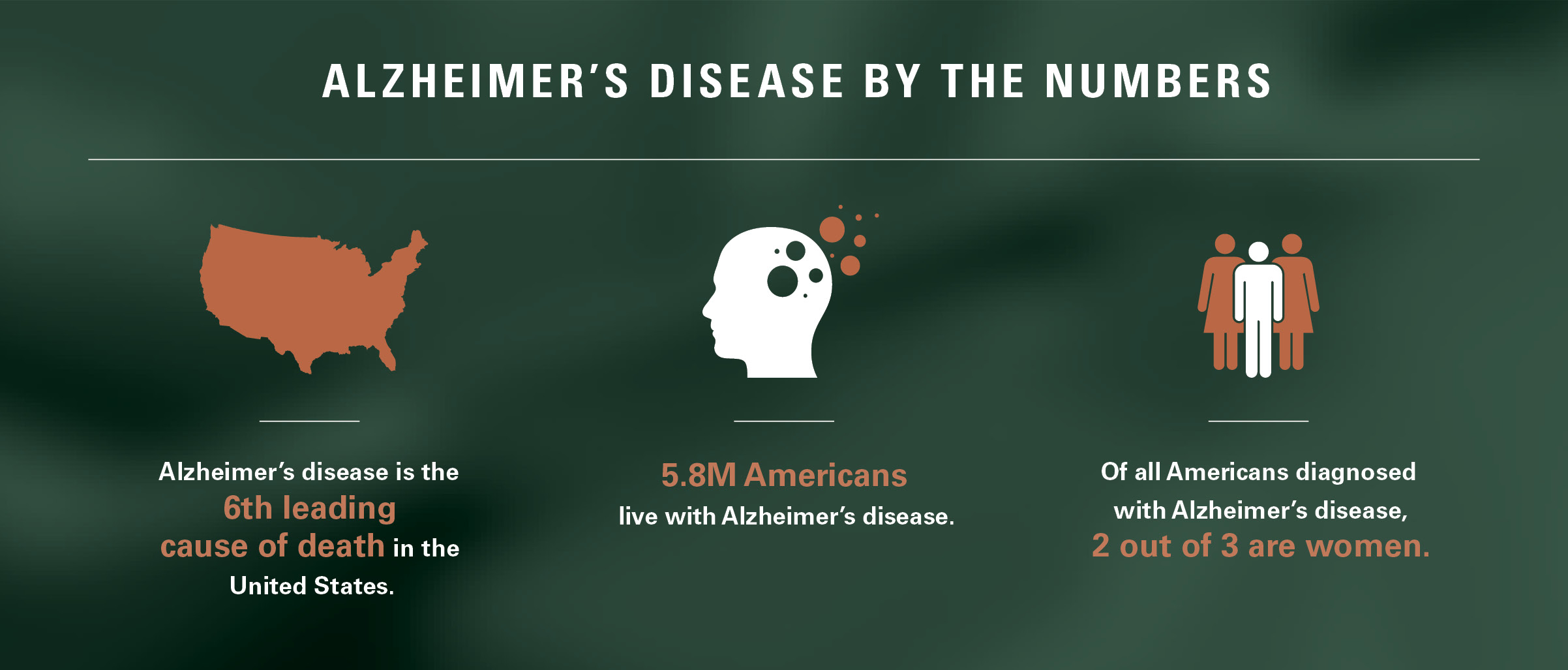The human brain, with its countless mysteries and complex links, may represent the next frontier of discovery and innovation. UTHealth researchers Yahuan Lou, PhD, and João L. de Quevedo, MD, PhD, are helping us to understand what makes our brains unique and to find better treatments, preventions, and cures for brain disorders.
Alzheimer’s disease is one of the great fears associated with getting older. And with good reason. An estimated 5.8 million Americans are living with the disease—approximately the combined populations of Houston, San Antonio, Dallas, and El Paso. Within a generation, that number could reach nearly 14 million.
“Alzheimer's disease is the most common type of dementia that causes problems with memory, thinking, and behavior,” explains Lou. “It is characterized by the presence of amyloid plaques and tangles composed of proteins with an alternative folding in the cerebral cortex and hippocampus.”
As we approach our 40s, we experience a sudden aging in neurons in the cerebral cortex and hippocampus, which interferes with the body’s ability to detoxify or repair damaged DNA and proteins. Researchers call this oxidative damage.
“Normal neurons respond to the oxidative damages by turning on machineries to repair DNA breaks or by discarding abnormal proteins through natural processes, similar to taking out the garbage,” Lou says. “Thus, neurons become healthy again. Interleukin 33 is critical to this process.”
Interleukin 33 is a protein that helps keep our tissues healthy as we get older. Aging accelerates when too much Interleukin 33 leaves our organs. Lou noticed this while studying premature ovarian failure. Removing Interleukin 33 caused the ovary to shrink faster than normal. This led him to wonder if Alzheimer’s disease results from the normal decline in the amount of this protein, which is in abundance in our brains. To find the answer, Lou formed a collaboration with a researcher from the Faillace Department of Psychiatry and Behavioral Sciences at McGovern Medical School at UTHealth: de Quevedo.
The team tested one group with artificially reduced Interleukin 33 levels and another with normal levels. The subjects with reduced Interleukin 33 levels did not perform as well on memory tests. They saw a change in the brain tissue of subjects with reduced levels of the protein.
“This is what we expected,” de Quevedo says. “If you have the disease, you have worse performances compared with your peers of the same age without the disease.” Lou points out that when a middle-aged brain does not have the Interleukin 33 levels to remove “garbage,” it becomes like the brain of a person 30 years older. “When this mechanism is broken, the brain becomes much older, leading to acceleration of aging, which leads to Alzheimer’s disease and death,” he says. “This is why middle age is a good time to look for Interleukin 33 and other biomarkers, such as those found in blood and urine, for early diagnosis of Alzheimer’s disease.”
Philanthropic support enables researchers like Lou and de Quevedo to produce preliminary data needed to move research forward for federal funding. “Endowments provide the freedom to explore novel ideas and be more innovative,” de Quevedo says. “With additional funding, we can move this idea forward and eventually convert our findings into improved patient care.”
Lou believes controlling Interleukin 33 levels in middle age will reduce the brain’s aging process. “It cannot cure Alzheimer’s disease, but we can stop the progress.” And stopping can be a start.


